Desert hillsides are dotted in a carpet of yellow in winter and spring as brittlebush comes into bloom. This Southwestern native may be beautiful, but it is also one very tough shrub. Brittlebush handles areas with rocky soil, full sun and little water with ease.
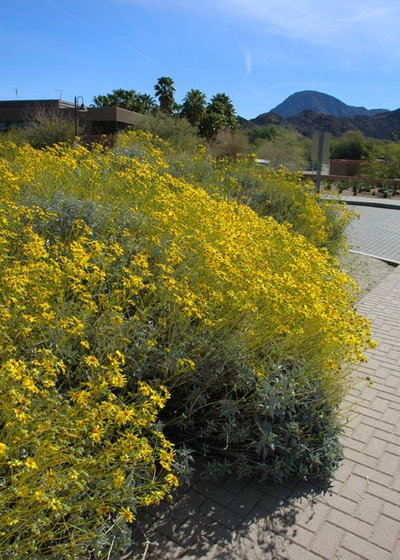
Noelle Johnson Landscape Consulting
Botanical name: Encelia farinosaCommon name: Brittlebush
Origin: Native to the southwestern United States into northern Mexico
Where it will grow: Hardy to 15 degrees Fahrenheit (USDA zone 8; find your zone)
Water requirement: Low
Light requirement: Full, reflected sun
Mature size: 3 feet tall and 4 feet wide
Benefits and tolerances: Extremely drought tolerant once established; can survive on natural rainfall, but will appreciate water once a month in the summer.
Seasonal interest: Flowers in late winter into spring
When to plant: Spring, fall and winter
Shown: Brittlebush lining the pathway to The Living Desert in Palm Desert, California
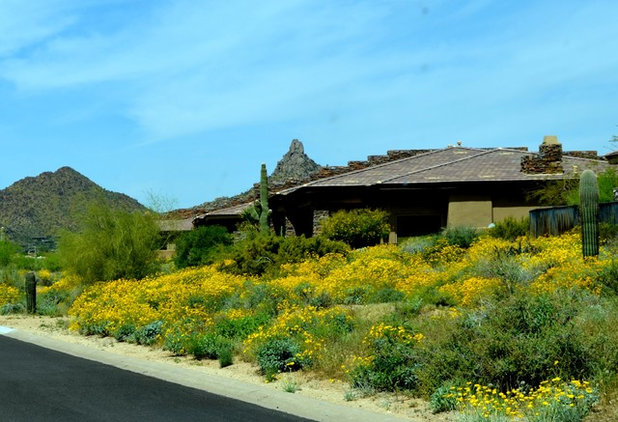
Noelle Johnson Landscape Consulting
Distinguishing traits. The end of winter is heralded with brittlebush’s masses of yellow, daisy-like flowers scattered throughout the desert.
The shrub thrives in seemingly inhospitable areas with rocky soil, scarce water and full sun. In the low deserts of the southwestern United States, brittlebush can be found growing up on hillsides, along washes and by the roadside.
Shown: Brittlebush grown from seed along the roadside in Scottsdale, Arizona
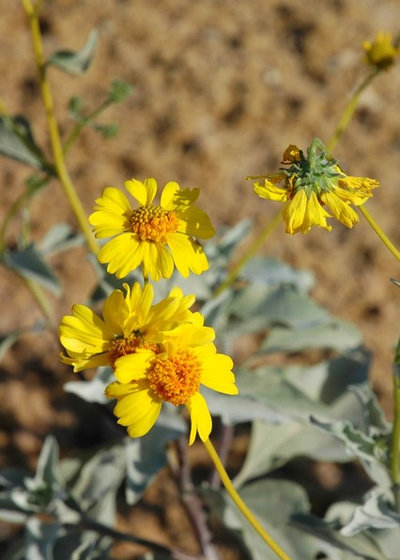
Noelle Johnson Landscape Consulting
The silvery leaves of brittlebush are perhaps its best-known characteristic; they get their grayish color from tiny, soft hairs that cover the leaves. The name brittlebush comes from the tendency of the branches to break off easily.
Brittlebush is a fast-growing shrub and can be grown from small plants, but is also easily grown from seed and will self-seed in the landscape. Its seed is often used for revegetation purposes in desert areas and to help stabilize sloped areas.
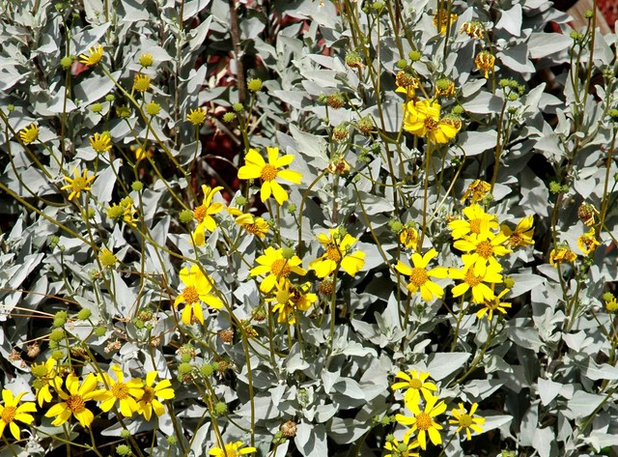
Noelle Johnson Landscape Consulting
Although brittlebush can survive on rainfall alone, it does appreciate supplemental water monthly in the absence of rainfall — particularly during the summer. Periods of intense drought will cause the leaves to fall. Drought conditions will also intensify the gray color of the leaves, making them appear almost white.
Avoid overwatering, as it leads to succulent growth that can bring aphids in spring; it will also shorten the life of the shrub.
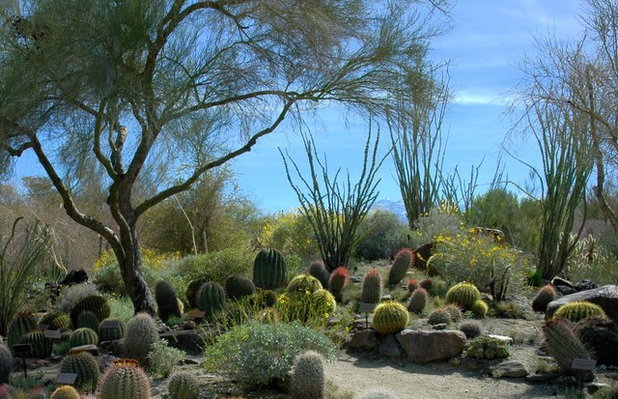
Noelle Johnson Landscape Consulting
How to use it. Because brittlebush is extremely drought tolerant, it makes a great choice for areas that receive little to no supplemental irrigation.
This shrub is best used in landscape areas where a natural desert look is desired. Pair it with other drought-tolerant plants, such as
barrel cacti (
Ferocactus spp), firecracker penstemon (
Penstemon eatonii), ocotillo (
Fouquieria splendens),
Texas ranger (
Leucophyllum spp) or
pink fairy duster (
Calliandra eriophylla).
Shown: Brittlebush growing among ocotillos and barrel cacti at The Living Desert.
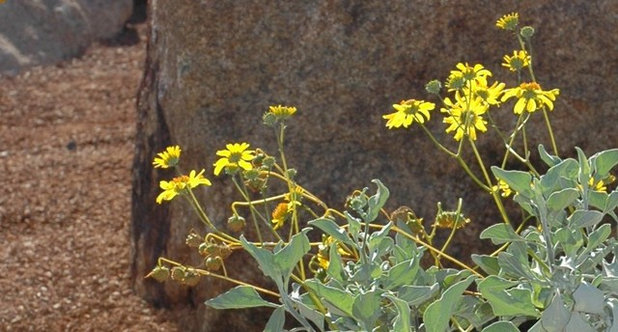
Noelle Johnson Landscape Consulting
Planting notes. Plant brittlebush in well-drained or even rocky soil. It requires full sun and won’t do well if grown in any type of shade — shade causes it to become straggly and may lead to root rot.
Water it weekly until it’s established — usually six months to a year. Thereafter brittlebush can survive on natural rainfall, but its appearance will be improved if you water it once a month in the absence of rain.
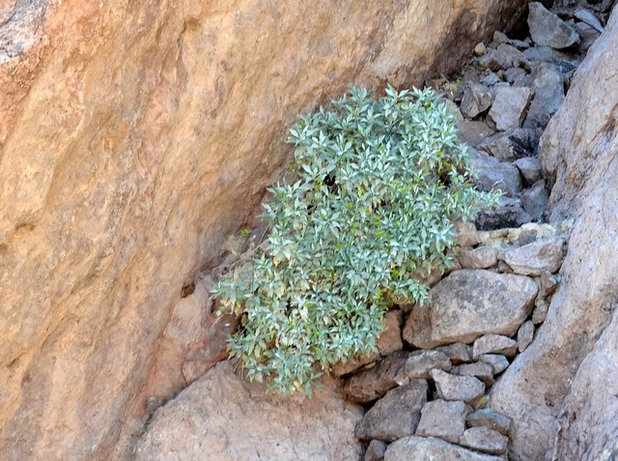
Noelle Johnson Landscape Consulting
Shear lightly in summer to remove spent flowers in areas with high visibility for a more attractive appearance.
In late fall prune it back severely (to at least half its size) to rejuvenate it and create a more compact-growing shrub.
Shown: Brittlebush growing on a rocky slope above the Hoover Dam in Nevada
More: What to Do in Your Garden Now





